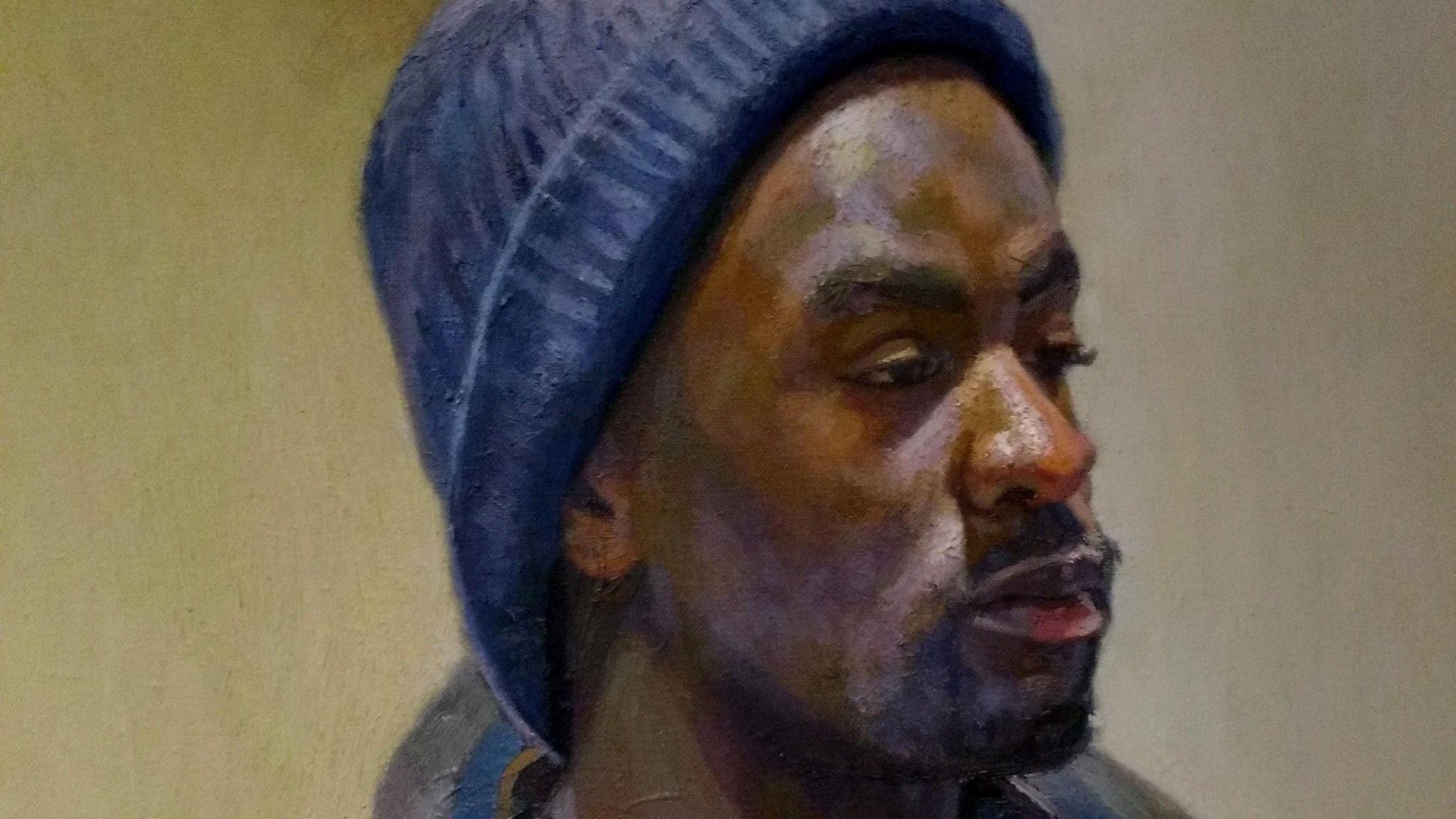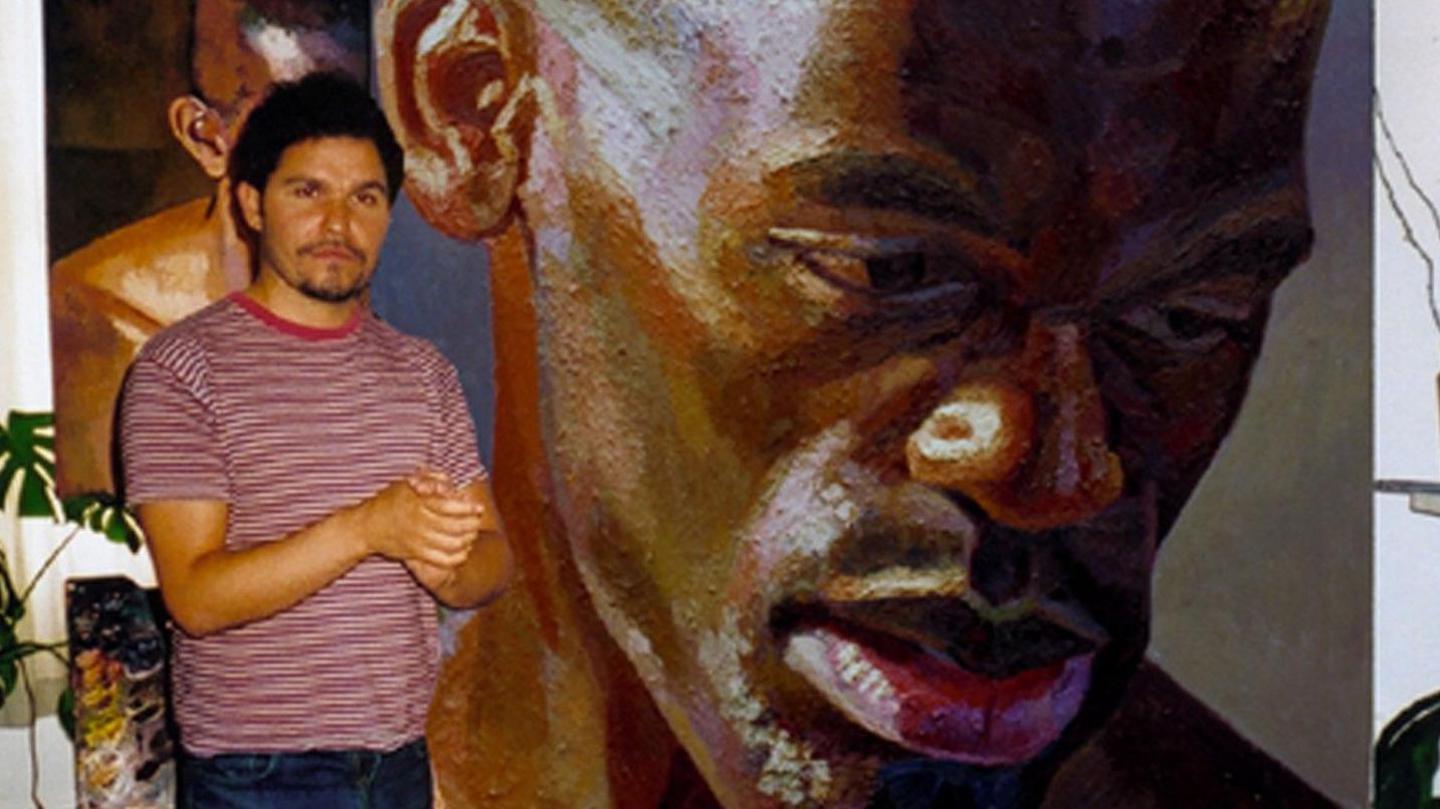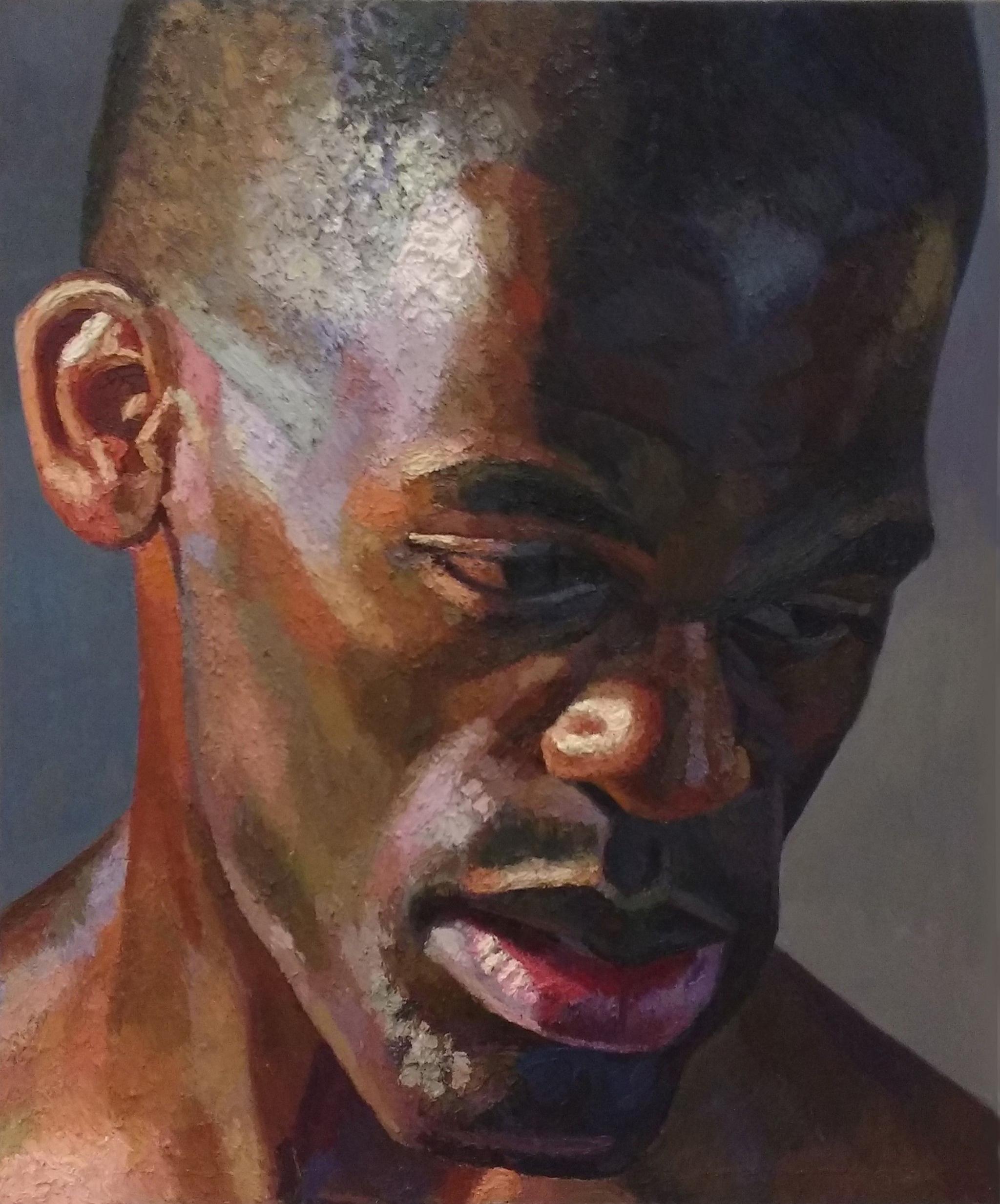Artist overcomes 'racism' to show black portraits

Head of Dan, by Nahem Shoa – a painting of one of his friends
- Published
An artist says he has faced racism within the art world and has struggled to find galleries willing to display his portraits of black people.
However, classically-trained Nahem Shoa said museums were increasingly open to representing images of non-white subjects.
The artist has put together an exhibition focusing on race and identity which opens at Ferens Art Gallery in Hull on Friday 18 October.
Mr Shoa said it was a "dream come true" that his work would appear alongside artists including Rembrandt and Lucian Freud.

Nahem Shoa, standing next to Giant Head of Gbenga (2001) that he painted from life, over a year
Mr Shoa, from London, was a graffiti artist before he trained as a painter. The artist won the Royal Society of Portrait Painters in 1992 and exhibited his work at the National Portrait Gallery's BP portrait awards the following year.
He began painting his friends but struggled to get the portraits displayed in galleries.
He said that some museums "didn't even reply to me".
"It was a project about race, but the project itself received a lot of racism, so it was barely shown, up until recently," he said.
Mr Shoa said museums changed their attitudes towards his work after the death of George Floyd, the African-American man who was murdered by white police officer Derek Chauvin in Minnesota during an arrest.
Following Mr Floyd's death, protests spread across the world as part of the Black Lives Matter movement, which campaigns for freedom, justice and equality.

Desmond Haughton: Self Portrait in a Yellow Waistcoat
Hull City Council have a number of events and exhibitions taking place in October to celebrate black heritage, as part of Black History Month.
Seen and Unseen, at Ferens Art Gallery, also includes work by Mr Shoa’s childhood friend and fellow artist Desmond Haughton.
"Both me and Desmond were trying to paint images of people of colour that were as powerful as Lucien Freud painted white people, you know, so you couldn't ignore them," Mr Shoa said.
"They're such powerful images", he added, and questioned: "Why is the black image so rare still in art galleries?"

Nahem Shoa's 2004 oil series Giant Heads, were painted up to 15 times life-size
Mr Shoa said the art world had evolved and got better at promoting the work of artists from ethnic minorities.
"Now", he said "there are some very famous artists of colour at the top of the art world, and it needed to change."
Listen to highlights from Hull and East Yorkshire on BBC Sounds, watch the latest episode of Look North or tell us about a story you think we should be covering here, external.